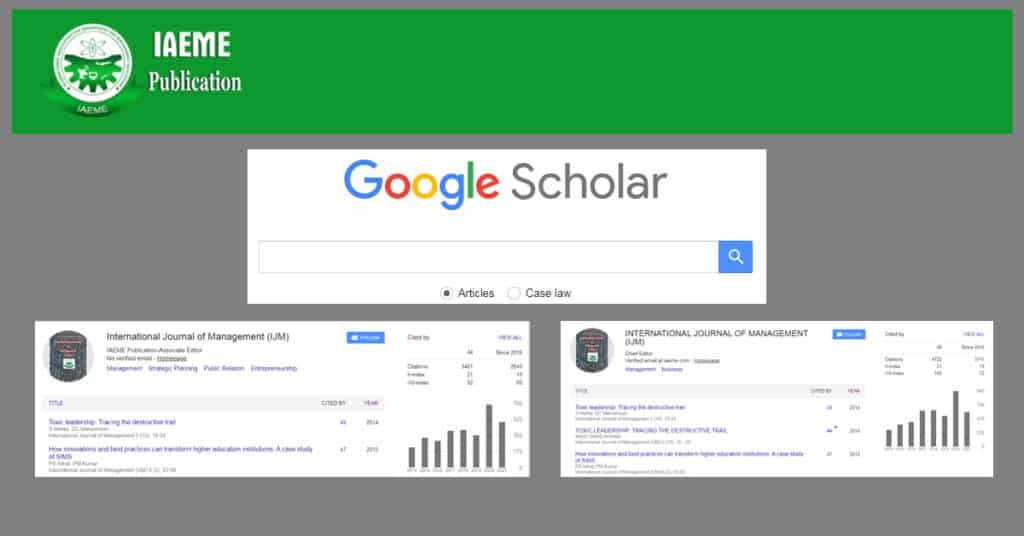Google Scholar and the International Journal of Management (IAEME Publication)
The International Journal of Management (ISSN: 0976-6502), which is published by IAEME Publication has two Google Scholar entries. Each one shows a different number of publications, citations, h-index etc. In this article, we take a closer look as well as comparing against the journal’s own records, from its web site.

